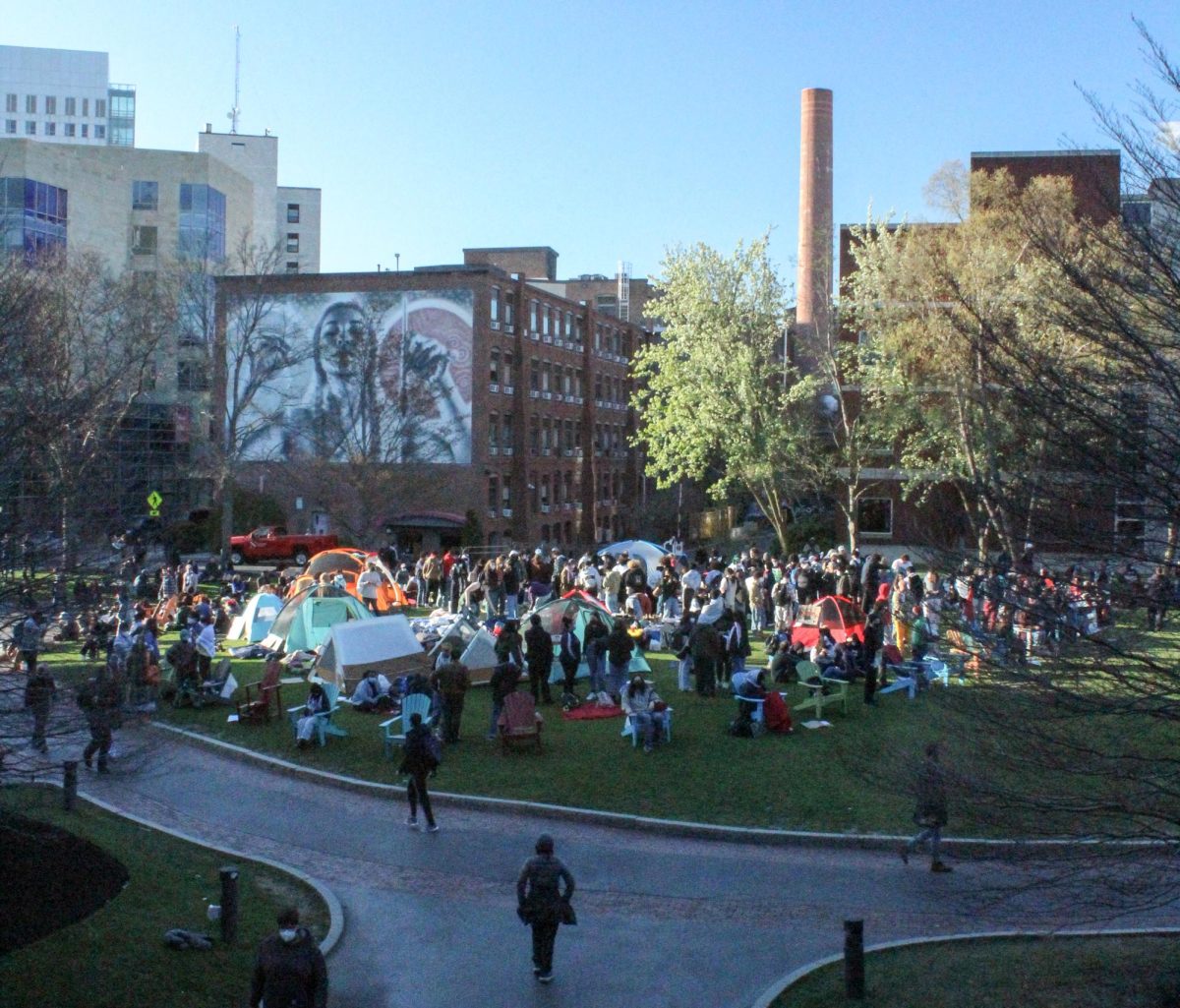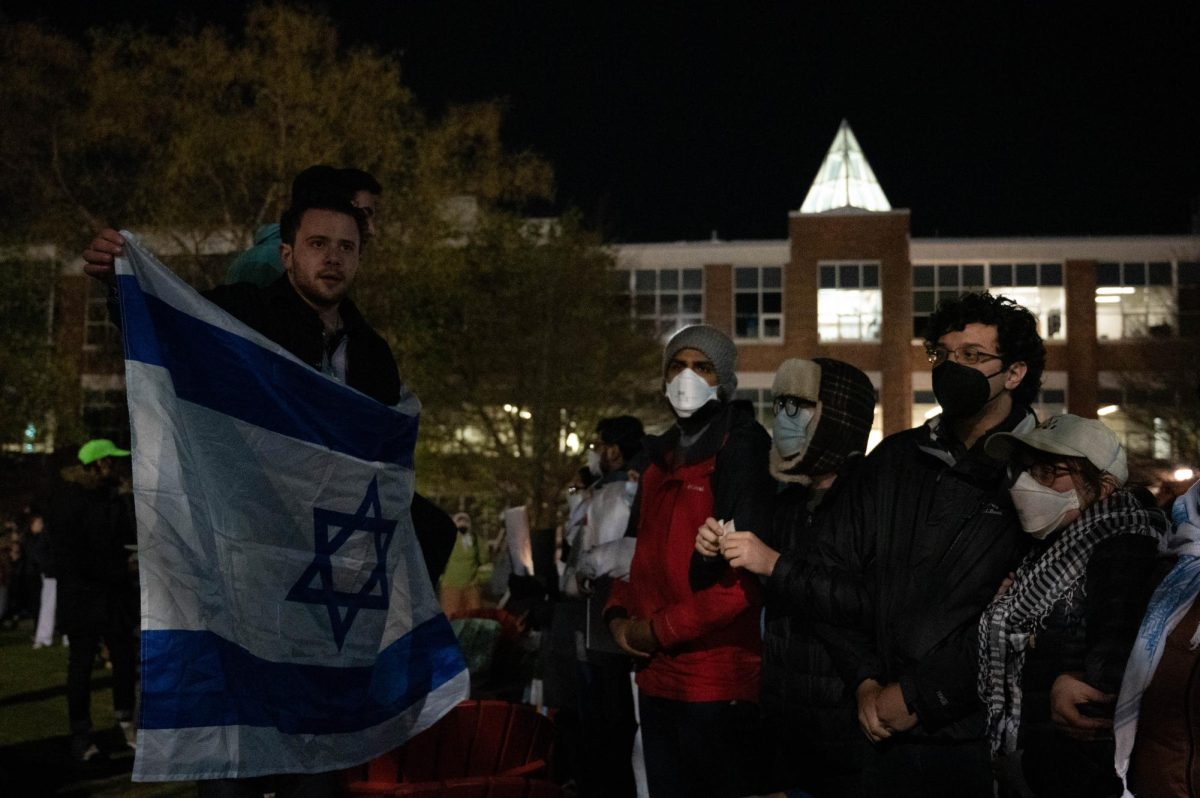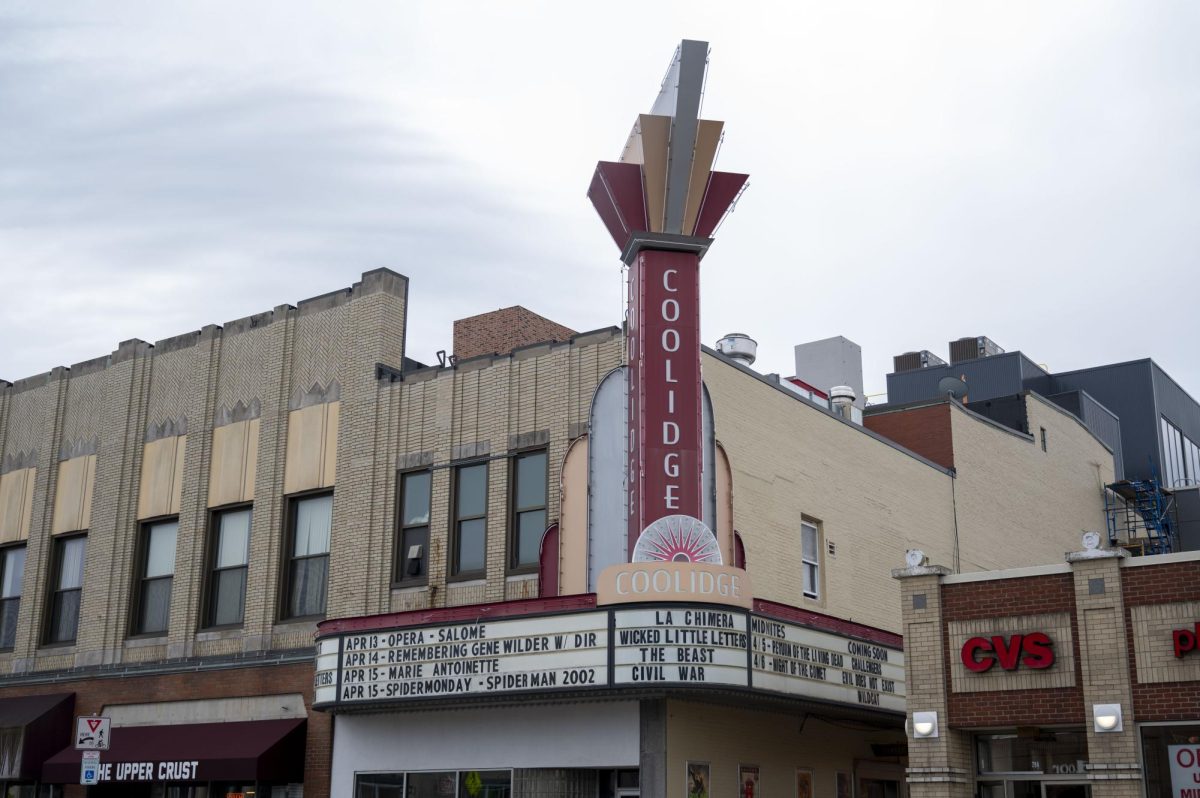
By Madelyn Stone, News Staff
The arrest of mobster Whitey Bulger last June triggered waves around the country, but had local “Boston Mob Guide” authors Stephanie Schorow and Beverly Ford excited for a particular reason.
“We started this book before he was captured,” Schorow said. “So we were pretty happy to see him captured. We knew it’d be a good boost for us.”
Ford and Schorow co-wrote “The Boston Mob Guide: Hit Men, Hoodlums and Hideouts” last year as a reference guide to the city’s most infamous criminals, including characters like Joseph “The Animal” Barboza, Stephen “The Rifleman” Flemmi and, of course, James “Whitey” Bulger. They visited Snell Library last Wednesday to give a talk about their book and the gangsters it describes.
“We try to separate myth from reality,” Schorow said. “We try to give just the facts about these mobsters. They had very colorful lives; they’re very interesting characters. They’re also very violent characters. And we try to present a full picture of them.”
The book spans mob history from the 1920s to present time, beginning with a chapter dedicated exclusively to Winter Hill Gang boss, Bulger. The hangouts, hideouts, hits and heists of the mobsters also have places in the book. In his introduction of the writers, library Communications Officer Thomas Urell said the familiarity of the places Ford and Schorow described was disconcerting.
“They talk about the locations where some of the seediest, darkest, scariest and creepiest events in mob history in Boston went down,” Urell said. “I was reading it on the T and I got spooked. I have seen about half of these places myself and walked past them.”
The guide’s final section examines the portrayal of the Boston mob in the movies, a topic that is also featured prominently in the authors’ talk. Ford and Schorow opened the presentation with a clip from “The Town,” and ended with a scene from “The Friends of Eddie Coyle.”
“We include a section on the Boston mob in the movies because there is such a blurring of fact and fiction between mobster myth and mobster reality and a lot of it comes out in the movies in some very interesting ways,” Schorow said. “For one thing, there’s a lot of borrowing of real things. One of the striking things [in “The Town”] is these really grotesque masks, and the nun outfits. I mean it’s a bizarre juxtaposition. But there’s actually some resonance for that in Boston history.”
Seven men wearing Halloween masks made the grotesque guise infamous in the 1950 Brinks robbery, stealing $2.5 million in a bloodless heist Schorow called the crime of the century.
“The actual masks that were used in the Brinks robbery were Captain Marvel Jr. and Captain Marvel,” Schorow said. “People described them as so grotesque that that’s kind of lived on. But they were actually sort of superheroes that came to rob in the Brinks robbery.”
Movies like “The Town” and “The Friends of Eddie Coyle” also represent another reality of mobster life, Schorow said. They show the dangers that existed for these lawbreakers on a daily basis.
“You can see that living this life, living the life of a mobster was tenuous – there was not a lot of job security – and very difficult,” she said.
As Bulger’s capture helped demonstrate, the instability of a mobster’s life only increased over time.
“Most of [the gangs] been pretty much decimated under RICO [the Racketeer Influenced and Corrupt Organizations Act],” Ford said. “I mean, there’s always going to be organized crime, you’re never going to get rid of it, but the Italian mob is not what it used to be.”
Schorow reiterated this point when she spoke about her perspective in writing “The Boston Mob Guide.”
“We were asked several times if we worried about our own safety in doing this,” she said. “And we don’t really feel that way. We feel that the mafia is pretty much a shadow of its former self.”
The authors may not have been concerned about the gangsters’ reception of their book, but they did worry about how another audience would interpret their depictions.
“I particularly thought about the victims of some of these guys as I was writing this,” Schorow said. “And what the victims’ families would think if we had overly glamorized these guys. I think that’s a very key point. I don’t know how to resolve it. Because Whitey is fascinating but he’s at heart a serial killer, so how do you reconcile that? It’s real difficult for any historian I think in trying to apply any kind of lens to interpretation of a character in history.”













